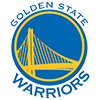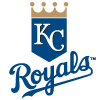Basketball may not be as violent as football or grueling as baseball, but 82 games of explosive, start-and-stop action can take an immense toll on an athlete's body. Basketball players play multiple games on consecutive nights and do not always have the luxury of a night off. Chronic and overuse injuries such as tendinitis and stress fractures tend to occur more frequently among NBA players and have the tendency to linger. These factors can cause fantasy owners headaches throughout the year and can easily derail any championship aspirations. However the diligent fantasy player can take a few easy steps to insure he fields a competitive team that's less likely to miss time while nursing injuries.
The first step is to examine a prospective draft pick's medical history, particularly how he spent the most recent offseason. Players coming off serious surgeries or returning from a debilitating injury are likely to start the season slowly but may come at a bargain price. For elite point guard Chris Paul the offseason has been particularly important as he rehabbed from two injuries suffered last season, one of which required surgery to repair. Paul's first injury occurred in late January when he suffered a torn meniscus in his left knee. The menisci are two disks made up of fibrocartilage, a specific kind of cartilage that is able to withstand high amounts of stress while retaining its elasticity. The menisci serve as both as shock absorbers and stabilizers. The Hornets point guard underwent arthroscopic surgery to
Basketball may not be as violent as football or grueling as baseball, but 82 games of explosive, start-and-stop action can take an immense toll on an athlete's body. Basketball players play multiple games on consecutive nights and do not always have the luxury of a night off. Chronic and overuse injuries such as tendinitis and stress fractures tend to occur more frequently among NBA players and have the tendency to linger. These factors can cause fantasy owners headaches throughout the year and can easily derail any championship aspirations. However the diligent fantasy player can take a few easy steps to insure he fields a competitive team that's less likely to miss time while nursing injuries.
The first step is to examine a prospective draft pick's medical history, particularly how he spent the most recent offseason. Players coming off serious surgeries or returning from a debilitating injury are likely to start the season slowly but may come at a bargain price. For elite point guard Chris Paul the offseason has been particularly important as he rehabbed from two injuries suffered last season, one of which required surgery to repair. Paul's first injury occurred in late January when he suffered a torn meniscus in his left knee. The menisci are two disks made up of fibrocartilage, a specific kind of cartilage that is able to withstand high amounts of stress while retaining its elasticity. The menisci serve as both as shock absorbers and stabilizers. The Hornets point guard underwent arthroscopic surgery to repair the tear and returned to action six weeks later. Unfortunately, his comeback was derailed seven games in after he suffered a torn ligament in his right middle finger. Surgical intervention was not necessary but the finger required an extensive amount of rest to mend. Paul wisely elected to sit out the World Championships in Turkey to allow both injuries more time to heal and should be ready to return to action when training camp begins.
While Paul is proven fantasy commodity, Clippers rookie Blake Griffin is still waiting to play his first minutes in the NBA after a stress fracture in his left kneecap forced him to miss all of last season. The kneecap, or patella, is a sesamoid bone located within the tendon of the quadriceps muscles. Its location allows it to increase the moment arm of the tendon, resulting in an increase in torque. By enhancing the torque, the total range at which the knee joint can bend or rotate is also improved. When the patella is injured, the quadriceps muscle displays what is called an active insufficiency in which the leg cannot be entirely straightened. If an elite basketball player like Griffin does not have full range of motion in the knee, he'll be unable to properly jump, run and cut. Fortunately Griffin and his broken patella are recovering well following surgery in January, and the Clippers remain optimistic he'll be ready for the start of the season. However, Los Angeles will continue to be overly cautious with the former No. 1 overall pick and could limit his minutes early on. In addition to Griffin and Paul, several other players will be looking to bounce back from an injury-riddled 2009-2010 season including Portland All-Star Brandon Roy (hamstring and knee), Detroit's Ben Gordon (ankle), and Golden State's Andris Biedrins (back).
The next step in properly preparing for your fantasy draft goes hand-and hand with knowing a player's history. You must decide whether a player has had an unlucky injury or deserves to wear the dreaded "injury-prone" label. This step is one of the hardest to determine and may require some diligent research. Instead of limiting your findings to last season, expand your investigation to include the last several seasons. Examining numerous seasons will give you better insight to a player's overall health and inherent injury risk. Consider the case of Detroit's Tayshaun Prince. Prior to last season Prince played in all 82 regular season games for six consecutive years and numerous playoff games. However a ruptured disk in his lower back limited Prince to just 49 games last season. He did manage to return and played well down the stretch, averaging 15.5 points, 5.5 rebounds and 4.1 assists in the final 30 games of the season. It's likely Prince's injury was an isolated incident, and nothing in his past suggests he's overly prone to injury. Besides Prince, Portland's Andre Miller, Orlando's Dwight Howard, Philadelphia's Andre Iguodala and Miami's LeBron James have all been models of consistency playing over 390 regular season games in the previous five seasons combined.
Conversely Houston's Yao Ming missed the entire 2009-2010 season with a broken left foot, but the injury should not have come as a surprise. In the previous five seasons Yao has missed 93 games while dealing with osetomyelitis in his big toe, another hairline fracture in his foot and a broken tibial plateau in his right leg. These mounting injuries are a good indicator that Yao cannot be trusted to last an entire 82 games. While Yao's production is valuable, fantasy owners willing to draft him must realize they're taking a calculated risk and should also draft a suitable backup to replace the center when he inevitably misses time. Other players that have a history of injury and should be considered high risk include Portland center Greg Oden, Houston guard Kevin Martin, Laker center Andrew Bynum and Denver forward Kenyon Martin.
Another step to better prep for a quality draft is to familiarize oneself with some basic medical terminology. For example, you should know the difference between a "sprain" and a "strain". These two words are often used interchangeably in the media when they should not be. A strain is an injury that occurs to a muscle and is commonly referred to as a "pulled muscle" or "torn muscle". A sprain is used to classify an injury that has occurred to a stabilizing ligament that connects bone to bone. Both strains and sprains vary in their recovery time and should not be viewed as the same thing. A sprained ligament can take longer to heal than a strained muscle because ligaments have a poor blood supply.
Pay attention to the degree of injury as well. Athletic trainers and medical personnel often classify a sprain or strain based on the severity of the injury. A Grade I injury is considered minor with partial or micro tearing of the affected structure while a Grade III is often a complete tear and viewed as a more serious injury. Grade III injuries often result in a loss of function and mechanical stability and come with a substantially longer window of recovery.
In addition to understanding the difference between a sprain and strain, NBA fantasy owners should make themselves aware of the difference in a regular ankle sprain and the more significant high ankle sprain. Sprained ankles are a common occurrence in basketball as a player cuts or comes down on the foot of another player. In a normal ankle sprain the ligaments located on either side of the ankle are stressed and sprained. However, a syndesmotic sprain, or high ankle sprain, occurs in the distal tibiofemoral joint where the ends of the lower leg bones, the tibia and fibula, form the ankle mortise. At the mortise, a strong ligament known as the interosseous ligament stretches across the joint to connect the two leg bones. Two additional ligaments, the anterior and posterior tibiofibular ligaments, assist in stabilizing this joint. A high ankle sprain involves excessive stretching and disruption of these particular ligaments. Treatment for these sprains is the same as a normal medial or lateral ankle sprains but they generally take longer to heal. Miami's Mario Chalmers, for example, suffered a high ankle sprain while practicing in July, but it was early enough that he's still expected to fight for the starting point guard position with the Heat.
Understanding medical terminology can also carry over into the season and allow owners to make better decisions regarding their players. A Grade I strain is no reason to send a player to the waiver wire, and owners aware of the lingo will know to wait several days for the injury to improve rather than prematurely dropping or trading a fantasy contributor. For example, newest Bull Carlos Boozer missed just four games last season while with the Jazz after playing in just 37 games the previous year. He was sidelined with mild strains to his calf and abdominals but returned swiftly from each injury. Fantasy owners that remained patient with Boozer were rewarded with solid production as the veteran finished the year averaging a double-double.
The threat of injury is an innate factor in fantasy basketball, but precautionary moves can be made to minimize the risk. Moreover, a little research and better understanding of common basketball injuries can help an owner draft responsibly and better handle the ones that inevitably occur.


























